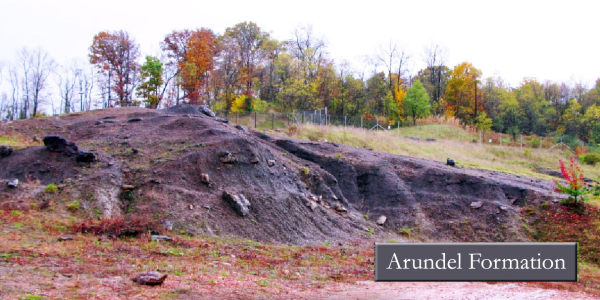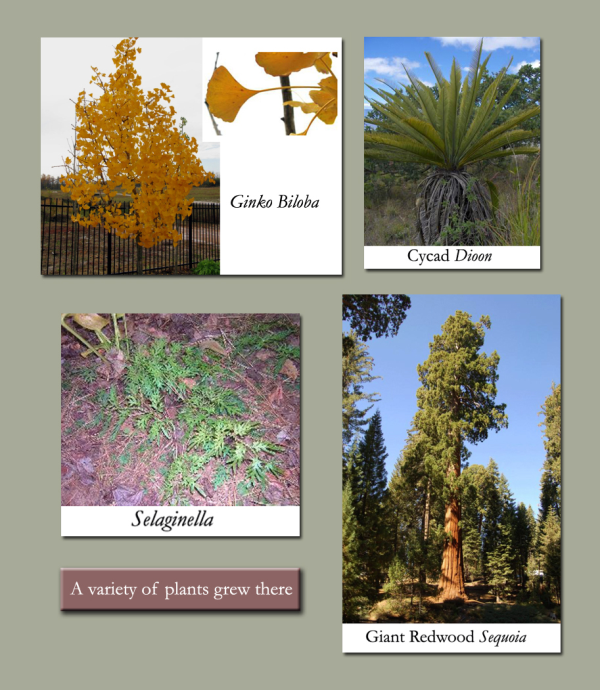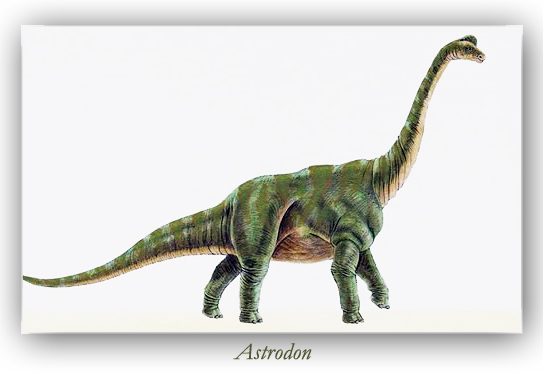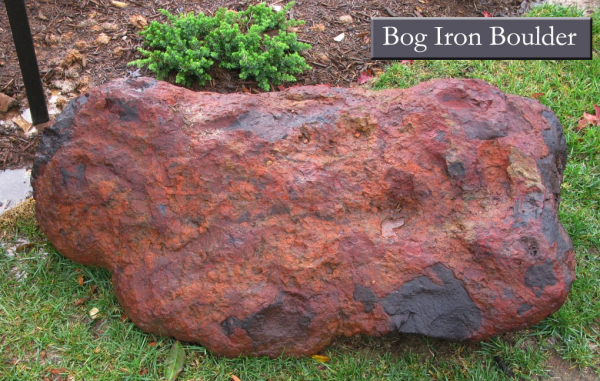
What events in Earth’s History brought these three, seemingly unrelated, things together in one location? The very short answer is Biology, Geochemistry, and Human activity. This however glosses over a wonderfully intricate chain of events that began in the Late Triassic approximately 200 million years before present.

Were you not now standing on concrete, your feet would be on sedimentary rock; one of three major rock types. The others being igneous and metamorphic, neither of which are present here. Sedimentary rocks are the result of weathering and the erosion of rock particles of any size (from microscopic to house sized boulders). The rock fragments must be transported by wind or water or both to a place where they accumulate. At the place of accumulation, as long as the source area and climatic conditions don’t change significantly, the nature of the sediment accumulated will remain similar. A packet of similar sedimentary rock, that is recognizable over a few square miles or more, may be given a formation name by a geologist to aid in communication with other geologists. The sedimentary rocks in front of you have been named the Arundel Formation after its location in Anne Arundel County, Maryland.
The Arundel Formation was deposited on the edge of the expanding Atlantic Ocean basin about 110 MYBP (million years before present) during a span of time called the Aptian. At that time the Atlantic Ocean was about half as wide as it is today. The Aptian Age lasted about 13 million years during the Early Cretaceous. Note that it did not take 13 million years to deposit the Arundel Formation – this probably took less than one or two million years. During Aptian time, this area was a broad flat plain crossed by streams carrying sediment which became the Arundel Formation. Today these rocks are being exposed for the first time in over 100 million years. When the Arundel Formation was being deposited, this area was similar to the present day coastal regions of Georgia, Alabama, Mississippi, and Louisiana. There were however, no rivers even approaching the Mississippi in length or volume of water.
Ecologically it was quite a different world. Evidence of these differences is seen in the fossils preserved in the clay. If you are here at the appropriate date and time you will have the opportunity to prospect for fossils. The area before you was, up until a few years ago, a commercial clay pit. During mining of the clay many large logs and pieces of branches were exposed. This woody material has not been fossilized in the way one usually imagines when that term is used. The fossil trees remain woody, burning easily when dry but producing an acrid sulfurous smoke. Not good for barbeques!!! 
A variety of plants grew here at that time including the redwood conifer "Sequoia" (most likely the above mentioned wood). Dioonites (cycad), Ginko (ginko), and Selaginella (a ground plant descendent of the giant lycopod scale trees that grew in the coal swamps 300 mybp during the Carboniferous). Selaginella can still be found in the woods in the immediate area today. But the other three mentioned plants no longer grow naturally in the area. However, you can see a Ginko biloba tree right next to you with the characteristic fan shaped leaves (they are shed annually so if you are here in the fall the leaves may be bright yellow or they may have already fallen).
Dinosaurs are, after all, why you are here in the first place, Right!! Presently only five dinosaurs are known from the Arundel Formation. The most commonly found bones are those of the herbivorous Astrodon johnstoni, a small brachiosaurid; also Maryland’s state dinosaur. A second brachiosaur, Pleurocoelus is known from a few bones. A third herbivore Tenontosaurus, an ornithopod, is present but rare. Carnivorous dinosaurs are represented by a few teeth, probably from Deinonycus, a velociraptor. The other carnivorous dinosaur, known from one tooth, is the archosaur Pricondon. Tracks of a non-dinosaurian reptile have also been reported and assigned to the ichno-genus Pteraichinus. This name indicates that the tracks have been interpreted as those of a pterosaur or flying reptile. Ichno fossils are trace fossils, such as footprints, feeding burrows, coprolites, nests etc. or in short, any evidence not directly part of the organism, which would indicate the presence of past life.

The Arundel Formation has yielded no complete, or even nearly complete, dinosaur skeletons. Why is this? For the most part, this is due to taphonomic processes. Taphonomy is the study of what happened to an organism from its death through the fossilization process. Most taphonomic processes are destructive and work strongly against preservation of complete skeletons. These processes include scavenging by other organisms, both large and small, transportation of bones by water or wind (if the bones are small), and weathering, among others. There is possibly a human factor to this lack of articulated specimens as well. During mining for bog iron or clay for bricks, fossils usually do not fare well; though without these human activities, we would know very little about the organisms that lived here in the Early Cretaceous.
The iron industry in Maryland was quite important, as “locally grown” products were cheaper due to the difficulty transporting materials great distances. The location of the bog iron deposits seems to be tied to the contact between the sedimentary formations and the older metamorphic rock that form the piedmont. Water percolating through the metamorphic rocks dissolves iron (as well as other elements). When iron laden waters arise from the ground as springs, they enter an environment with conditions not favorable for iron to remain in solution. The presence of oxygen and bacteria cause the iron to precipitate out of the water and form bog iron. One can see this today, in a small way, when walking in the country. If you see “oil” on a small pool of water – poke it with a stick. Notice that it does not flow back and cover the pool as oil would but is shattered as a plate of glass would be. This “oil” is actually a thin film of iron that has come out of solution.
Clay that settled from the streams to form the Arundel Formation has been used to make fired bricks. How many dinosaur bones or bone fragments do you think have been baked into bricks? Remember, though, that without clay mining there would be little or no outcrop to prospect for fossils. Fired bricks are red. Why would that be when the clay is gray? Iron is present in the clay, but in a reduced or non-oxidized state. During the firing process, the clay is heated to a temperature at which the clay fuses together to make a material that is resistant to weather much longer than an unfired mud or adobe brick. During this firing process the iron, in the presence of oxygen, “rusts” or oxidizes, turning the brick red.
Additional information about the Dinosaur Park can be found on the web at the following sites.
Peter Kranz – who was one of the moving forces to get this park established has a web site full of information:
http://terpconnect.umd.edu/~gdouglas/maryland/index.html
The National Museum of Natural History's Department of Paleobiology has a website Dinosaurs in Our Backyard which features artistic reconstructions and video interviews about what Laural looked like when the dinosaurs walked around.
For information about the park call 301-627-7755, TTY 301-446-3402.
Hours of Operation:
Dinosaur Park interpretive area is open from dawn to dusk 7 days a week. The public is invited to participate in hands-on programs the first and third Saturdays of every month from 12 noon until 4 pm. School programs and group tours are offered weekdays by appointment. Please call 301-627-7755. The cost for school programs is $50 for Prince George’s County residents and $60 for non-county residents.
To log this cache please do the following:
- In your log on the cache page – Tell us – in a sentence or two – how, when, and why you became interested in Dinosaurs and if you think other fossils are more interesting than dinosaurs let’s hear that as well.
In an e-mail to me through Groundspeak the answers to the following questions. DO NOT PUT THE ANSWERS IN YOUR LOGS. LOGS WITH SPOILERS WILL BE REMOVED WITHOUT WARNING.
- 1) According to the sign "The History of Dinosaur Park" who first discovered dinosaurs in Maryland?
- 2) According to the sign "The Cretaceous world" complete the sentence "This in turn....."
- 3) What made it possible for dinosaurs to grow faster than elephants?
Optional – because we always like to see smiling faces post a photograph of yourself enjoying the park – especially if you are there looking for bones on one of the days the park is open for that activity.
We want to express our gratitude to Mrs. Bocco for design of this web page.
